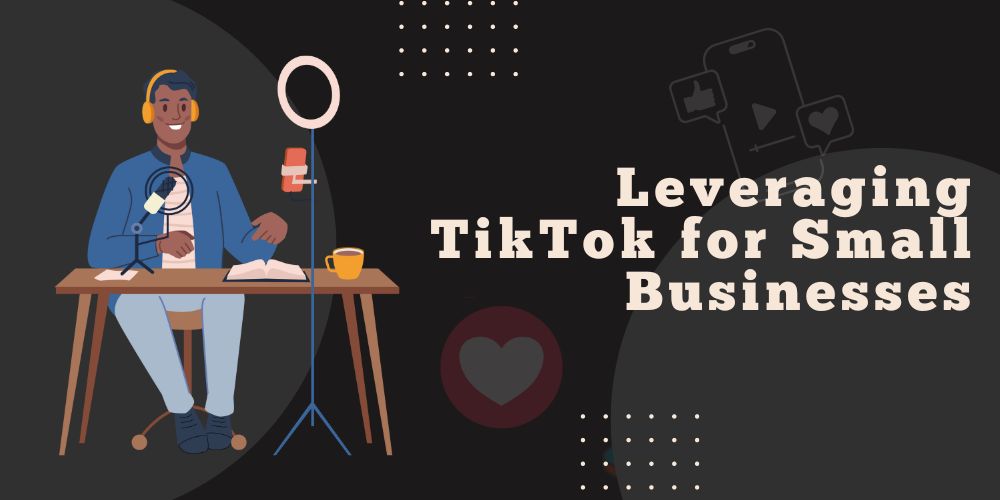Have you ever wondered why people choose one product over another? The secret lies in a process called the Buyer’s Journey, a simple yet powerful concept that explains how people decide what to buy.
Imagine it as a roadmap that everyone follows when making a purchase, from the moment they realize they need something to the point where they make a decision.
By comprehensively mapping this journey, businesses can gain valuable insights into customer behavior, preferences, and pain points, allowing them to tailor their marketing strategies effectively.
In this article, we’ll explore the buyer’s journey, its significance, and how businesses can leverage it to enhance their marketing efforts.
Understanding the Buyer’s Journey
The buyer’s journey can be broadly categorized into three stages: awareness, consideration, and decision.
Customers can enter the buyer’s journey at any stage, though most start at awareness. To help guide prospects through the entire journey, you need to create content for each stage of the process.
Let’s look at the stages in more detail …
Awareness Stage: At this stage, buyers realize they have a problem or a need. They start researching to understand their problem better and find possible solutions. During this phase, they become aware of different products or services that might help them address their issue.
Consideration Stage: In the consideration stage, buyers have clearly defined their problem and are actively evaluating available options. They compare different products, services, or solutions, looking at features, benefits, and prices. They might read reviews, seek recommendations, and gather as much information as possible to make an informed decision.
Decision Stage: The decision stage is where buyers make their final choice and commit to a purchase. They might compare prices, look for additional incentives (like discounts or special offers), or check out the reputation of the seller or brand. Ultimately, they decide on the specific product or service that best fits their needs and make the purchase.
Understanding the stages of the buyer’s journey is crucial. By aligning your marketing strategies with the buyer’s journey, you can increase the likelihood of converting potential customers into satisfied buyers.
Significance of Mapping the Buyer’s Journey
Now, that you know what the buyer’s journey is, let’s talk about how the buyer’s journey can help you improve sales and why it’s so important for businesses.
1. Improved Targeting
By understanding where the buyers are in their journey, businesses can create targeted marketing campaigns. Tailoring content and messages according to each stage ensures that potential customers receive the right information in the right place at the right time.
2. Enhanced Customer Experience
Mapping the buyer’s journey allows businesses to empathize with their customers. By anticipating the needs and concerns of buyers at different stages, businesses can provide a seamless and personalized experience, fostering trust and loyalty.
3. Better Marketing Strategies
Analyzing buyer’s journey data provides valuable insights into the effectiveness of marketing strategies at different stages. Businesses can identify which channels, content types, or messages resonate best with their audience at each stage, enabling them to optimize their marketing efforts for better results.
4. Product Development
Insights from the buyer’s journey can guide product and service development. Understanding what problems potential customers are trying to solve helps businesses create products or services that align with market demands, ensuring relevance and competitiveness.
5. Optimized Marketing Budget
Understanding the buyer’s journey helps businesses allocate their marketing budget more efficiently. By focusing resources on strategies that resonate with customers at different stages, businesses can maximize the impact of their marketing initiatives.
How to Map the Buyer’s Journey
So, now you know what the buyer’s journey is and why it is so important.
Next, you need to learn how to map out your journey.
This step-by-step guide will provide you with an overview of how to do that.
Step 1: Define Your Buyer Personas
Start by creating detailed buyer personas. Identify your target audience’s demographics, behaviors, goals, challenges, and preferences. Understanding your audience segments will help you map their specific journeys more accurately.
RELATED: How to create marketing personas …
Step 2: Conduct Research
Gather data through customer surveys, interviews, website analytics, and social media insights. Look for patterns in customer behavior, preferences, and pain points. Understand the common questions customers ask and the challenges they face related to your products or services.
PRO TIP: Go in with an open mind about who your customers are to avoid any biases. You may be surprised to find out that the people who are interested in your product aren’t who you thought they were.
Step 3: Map Customer Actions and Goals
For each stage, outline the actions customers take and their goals. Identify the questions they ask, the information they seek, and the challenges they encounter. This step helps you empathize with your customers and understand their mindset at different points in their journey.
Here’s a quick review of each stage …
Awareness Stage: The customer realizes they have a problem or need.
Consideration Stage: The customer researches solutions and compares options.
Decision Stage: The customer makes a purchase decision.
Step 4: Create Content for Each Stage
Develop tailored content for each stage of the buyer’s journey. We’ll talk about what this content looks like in more detail shortly. For now, here is a brief summary.
In the Awareness stage, create educational content addressing common problems.
For the Consideration stage, provide comparative resources and solution-focused content.
In the Decision stage, offer testimonials, case studies, and incentives to encourage purchasing decisions.
Step 5: Determine the Channels and Touchpoints
Identify the channels and touchpoints where customers interact with your brand. This includes your website, social media, email, customer support, and offline interactions. Once you’ve identified them, consider how customers engage with you at each stage through these channels.
Some channels like social media and blogs may be touchpoints at multiple stages of the journey while others may only be present during a single stage, such as promotional offers during consideration.
Step 6: Implement Tracking and Analytics
Utilize analytics tools to track customer interactions across various channels. Monitor website traffic, social media engagement, email open rates, and conversions. Analyze the data to identify which content and channels are most effective at each stage of the buyer’s journey.
Step 7: Iterate and Improve Your Buyer’s Journey
Regularly review your data and customer feedback. Identify any gaps or areas for improvement in your buyer’s journey map. Update your content and strategies accordingly to better align with your customers’ needs and expectations.
By following these steps, you can create a comprehensive and effective buyer’s journey map that guides your marketing efforts, enhances customer experience, and ultimately leads to increased conversions and customer satisfaction.
How Marketing Automation Can Improve The Buyer’s Journey
Marketing automation plays a pivotal role in enhancing the buyer’s journey by automating repetitive marketing tasks and providing personalized experiences at scale. By analyzing customer behavior and engagement patterns, marketing automation tools can deliver timely and relevant content to potential buyers, guiding them seamlessly through each stage of the journey.
In the awareness stage, automated email campaigns and social media posts can disseminate valuable educational content, capturing the attention of potential customers. During the consideration stage, marketing automation can track customer interactions with various products or services, enabling businesses to send targeted messages tailored to individual preferences and needs. In the decision stage, personalized offers, product recommendations, and follow-up emails can be automated, encouraging customers to make a confident purchase decision.
This empowers businesses to nurture leads and seamlessly guide them through the buyer’s journey.
Content For Every Stage Of The Buyer’s Journey
Tailoring content and choosing the right channels for each stage of the buyer’s journey is crucial for effective customer engagement. While the content and channels used will vary from one business to another, here’s a general breakdown for each stage:
1. Content for the Awareness Stage
Blog Posts and Articles: Informative and educational content addressing common problems and challenges faced by the target audience.
Infographics: Visual content that presents complex information in an easily digestible format, capturing attention and conveying key messages.
Videos: Engaging explainer videos or tutorials on how your products or services can solve specific issues.
Social Media Posts: Shareable content on platforms like Facebook, Instagram, and Twitter, creating brand awareness and sparking interest.
Podcasts: Audio content discussing industry trends, challenges, and solutions, reaching audiences on the go.
2. Content for the Consideration Stage
E-books: In-depth guides and resources offering comprehensive insights into industry-related topics, showcasing expertise, and building credibility.
Comparison Guides: Detailed comparisons between the business’s offerings and competitors, highlighting unique features and benefits.
Webinars: Interactive online sessions providing expert advice, answering questions, and demonstrating how the business’s solutions address specific issues.
Email Newsletters: Regular updates containing valuable content, promotions, and product/service highlights, nurturing leads and maintaining engagement.
Blog Posts and Articles: Informative content that provides comparative analyses, case studies, expert opinions, and FAQs about your solutions.
3. Content for the Decision Stage
Case Studies: Real-life examples of how the business’s products or services solved problems for previous customers, building trust and credibility.
Product Demos: Interactive demonstrations showcasing the features, usability, and benefits of the business’s products or services.
Free Trials: Offers allowing potential customers to experience the product or service firsthand, encouraging them to make an informed decision.
Testimonials and Reviews: Positive feedback from satisfied customers, building social proof, and instilling confidence in potential buyers.
Limited-Time Offers: Exclusive discounts, promotions, or bonuses for a limited period, creating a sense of urgency and encouraging immediate action.
FAQs and Customer Support Content: Comprehensive answers to common questions, addressing concerns, and providing reassurance during the decision-making process.
Choosing The Right Channel
To help get your content in front of target audiences, you can:
- Optimize content for search engines to attract organic traffic from users actively seeking information related to the business’s offerings.
- Utilize social media channels to share blog posts, infographics, and videos, and engage with potential customers.
- Publish content on a content aggregator website to expand your reach to a wider audience interested in relevant topics.
- Use paid ads to get in front of your audience on social media, search engines, and more.
- Use email campaigns to deliver personalized content tailored to individual interests and preferences.
- Host webinars on platforms like Zoom or GoToWebinar, allowing interactive engagement with potential customers.
- Participate in relevant online forums or community platforms, sharing valuable content and engaging in discussions to establish authority and trust.
- Feature product demos, free trial sign-ups, testimonials, and limited-time offers prominently on the website, ensuring easy access for interested visitors.
- Ask customers to share testimonials and reviews on review platforms to build credibility and trust among potential buyers.
- Provide real-time assistance via live chat, addressing inquiries and concerns promptly, and guiding potential customers towards making a confident decision.
By strategically aligning these content types with the appropriate channels at each stage of the buyer’s journey, businesses can effectively nurture leads, build trust, and guide potential customers toward making informed purchase decisions, ultimately driving conversions and fostering long-term customer relationships.
Why You Need To Consider The Buyer’s Journey
Mapping the buyer’s journey is a fundamental aspect of modern marketing strategies.
By understanding the stages of awareness, consideration, and decision, businesses like yours can create personalized and impactful marketing campaigns. This approach not only enhances customer experience but also boosts conversion rates and fosters long-term customer relationships.







